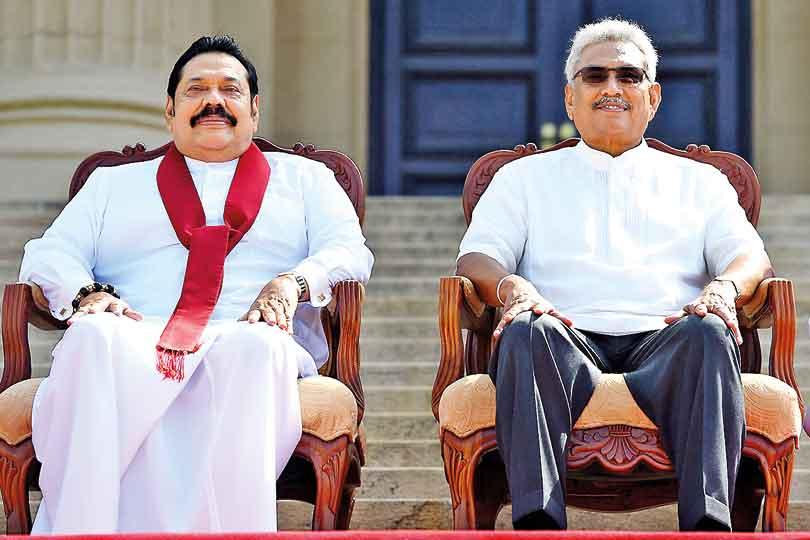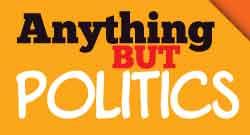Reply To:
Name - Reply Comment

 President Gotabaya Rajapaksa does not wear traditional ‘Kurahan satakaya’ (red coloured shawl) which is part of the family’s traditional attire. All the other members of the Rajapaksa family in politics stick to this dress code, but President Rajapaksa is an exception.
President Gotabaya Rajapaksa does not wear traditional ‘Kurahan satakaya’ (red coloured shawl) which is part of the family’s traditional attire. All the other members of the Rajapaksa family in politics stick to this dress code, but President Rajapaksa is an exception.
President Rajapaksa looks different to other Rajapaksas not only in terms of his dress code, but also his policies and approach. He is the first non-career politician to become the Head of State. It reflects in his way of doing things.
In the execution of his Government’s policies, he wanted a small Cabinet comprising 15 members; the smallest since 1956. He wants them to work according to an action-oriented, target-minded programme. He insisted on meritocracy when appointing chairmen and director boards of the statutory boards. He appointed a board consisting of four officials including former Secretary to the President Lalith Weeratunga for the selection of qualified candidates to be appointed to such posts in the state sector.
Ten days into office, President Rajapaksa took some initiatives that were lauded by the general public, more or less. City clearing operations, the proscription of the display of politicians’ photos at the state institutions and the curtailment of his security detail are a few of them. Let alone, he is yet to get his act together in the government. Though the Ministers had been sworn into office, they had not been assigned subjects and institutions as of yesterday. The state and deputy ministers took oaths only yesterday. In that sense, it will take a few more days for the new Government to start functioning in the proper sense.
When the Government starts functioning in full gear, President Rajapaksa and his Cabinet would have to face headwinds in the economic and international arena. To rise to the challenges, the Government needs meticulous approach.
In the international arena, the new regime will encounter its first challenge when the United Nations Human Rights Council (UNHRC) conducts its next session in February and March, next year. Sri Lanka cosponsored the UNHRC resolution 30/1 in 2015 under the previous government committing to address issues of accountability and rights violations during the wartime. The former rule evoked the public ire by doing so. Sri Lanka even committed to enact a series of fresh legislations and to establish a judicial mechanism with the involvement of  international or commonwealth judicial personnel to hear such cases. There were differences of opinion within the former government itself in this regard. It finally proved to be a decision taken by then Foreign Affairs Minister Mangala Samaraweera without broad consultation with the stakeholders concerned.
international or commonwealth judicial personnel to hear such cases. There were differences of opinion within the former government itself in this regard. It finally proved to be a decision taken by then Foreign Affairs Minister Mangala Samaraweera without broad consultation with the stakeholders concerned.
The Government advocates a totally different stand in this regard. When Sri Lanka’s case is taken up for consideration by the UNHRC in March, this year, the Government would have to argue against what Sri Lanka itself committed under the former rule.
The human rights bloc of the western world will up the ante in the debate. The Tamil National Alliance (TNA), along with Tamil Diaspora groups, will join the chorus against the new government. Already, new Foreign Affairs Minister Dinesh Gunawardane has pledged to review the previous government’s commitment to the UNHRC. To withdraw co-sponsorship is a mighty challenge that can stand in the way of the new government.
The government will enjoy the goodwill of the countries saucy as China, Russia and Pakistan in this endeavour. Likewise, it will try to accommodate India on board to salvage itself from the UNHRC spotlight this time.
It is not difficult at all for Sri Lanka to get the support of the countries such as China and Russia for this exercise because they are among the countries that are opposed to country specific resolutions in principle. India’s stand on Sri Lanka in this regard has varied from time to time. It stood with Sri Lanka on some occasions and opposed on the others.
It is not immediately clear how India would conduct itself this time. However, India’s goodwill is indicative. It immediately got in touch with the new government and was the first to invite President Rajapaksa to New Delhi. It suggests that there is an opening for Sri Lanka to engage India for its support in rising to the challenge in Geneva in March.
This will be discussed during the upcoming visit of President Rajapaksa to India. The present central government of India can take decisions in this regard independent of Tamil Nadu this time because it does not depend on the support of legislators from that state for stability in the central administration.
In return, India will expect Sri Lanka’s goodwill mainly to secure its strategic security interests and implement the projects in the pipeline.
On the economic front, the government will have to deal with debt servicing due for the coming year. The government has to finance debt servicing despite the depletion of state revenue. No matter what, the government, in its very first Cabinet meeting chaired by President Rajapaksa, announced an economic revival programme. That is basically to restructure direct and indirect taxation, eventually leading to a drop in prices of essential items.
This is just a government formed for an interim period till the conduct of the general elections after dissolving Parliament in March, next year.
The President is empowered by the Constitution to dissolve Parliament only after March 1, 2020. However, it can be done even before at any time by adopting a parliamentary resolution with two-thirds.
The leaders of the political parties aligned with the government met on Tuesday evening and discussed the need to get a snap general election as early as possible. They resolved that they should strive hard for it.
At the meeting, national organizer of Sri Lanka Podujana Peramuna (SLPP) Basil Rajapaksa presented a progress review of the presidential elections.
Ahead of the presidential elections, SLPP signed a MoU with Sri Lanka Freedom Party (SLFP). It stipulates that the two parties should contest under a common symbol instead of the SLPP’s lotus bud symbol at the general elections.
In spite of such an understanding, some SLPP MPs have sparked a debate that the lotus bud symbol should not be compromised at the general election.
Industrial Export and Investment Promotion, Tourism and Civil Aviation Prasanna Ranatunga echoed his sentiments in this regard. Many view this as a move by the SLPP to consolidate itself ahead of the general elections.